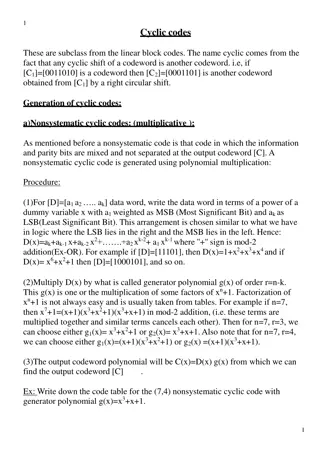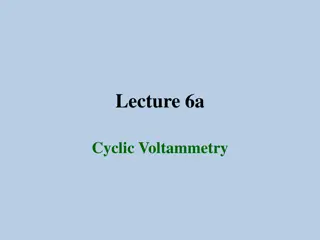
Graph Theory Basics: Definitions, Theorems, and Corollaries
Explore key concepts in graph theory including acyclic graphs, trees, and properties of vertices, edges, and components. Learn about theorems and corollaries, such as the uniqueness of paths in trees and the relationship between vertices and edges in acyclic graphs.
Download Presentation

Please find below an Image/Link to download the presentation.
The content on the website is provided AS IS for your information and personal use only. It may not be sold, licensed, or shared on other websites without obtaining consent from the author. If you encounter any issues during the download, it is possible that the publisher has removed the file from their server.
You are allowed to download the files provided on this website for personal or commercial use, subject to the condition that they are used lawfully. All files are the property of their respective owners.
The content on the website is provided AS IS for your information and personal use only. It may not be sold, licensed, or shared on other websites without obtaining consent from the author.
E N D
Presentation Transcript
Cyclic Graph Dr. I.Pradeepa Deparment of Mathematics 1
Definitions and Simple Properties 2 Acyclic Graph Cyclic Graph called as an acyclic graph. A graph which is not cyclic is in which only repeated vertex is the first/last one. A cycle is a nontrivial circuit
Tree 3 A Graph G is called a tree if it is a connected acyclic graph. Examples of a tree with different no. of vertices
Theorem 1 (a) Let u and v be distinct vertices of a tree T. Then there is precisely one path from u to v . (b) Let G be a graph without any loops. If for every pair of distinct vertices u and v of G there is precisely one path from u to v, then G is a tree. 4 p Proof: P=u1u2 ..umv This produces a cycle, since no two of the u terms are repeated. no two the v terms are repeated. Suppose the result is false Then there exist two vertices pI PI=uv1v2 vnv w - common vertex This contradiction means that our initial assumption must be false. Thus there is precisely one path from u to v. Since T is a tree, T has no cycles.
5 Theorem 2 Let T be a tree with at least two vertices and P=u0u1 ..un be a Longest path in T (so that there is no path in T of length greater than n). Then both u0 and un have degree 1. (i.e)., d(u0)=1=d(un). Proof: another edge e from u0 to a Vertex v of T. If v this vertex v is the one of the vertices of the path P then we may Set v=ui this produces a cycle. Since T is a tree it has no cycles. Therefore v is not one of the vertices. Suppose that d(u0)>1. The edge f=u0u1 contributes 1 to the degree of u0 and so there must be longest path. P1 gives a path of length n+1 in contradiction to our assumption that P is the Therefore there is no edge e and so d(u0)=1.
6 Corollary Any tree T with at least two vertices has more than one vertex degree 1. Proof: In such a tree T there is a longest path P ( of length greater than 0 ) and so the theorem produces at least two vertices of degree 1.
Theorem 3 G has n-k edges. Let G be an acyclic graph with n vertices and k components, (i.e) ?(G)=k. Then Proof: the ith component Ci has ni vertices. The n=n1+n2+n3+ nk. Also, since each Ci is a tree, it has ni-1 edges and so since each edge of G belongs to precisely one component of G the total number of edges in G is (n1-1)+(n2- 1)+ +(nk-1). Thus G has (n1+n2+n3+ ..nk)-k edges, (i.e) n-k edges Denote the k components of G by C1,C2, ,Ck and suppose that for each I, 1<i<k,






















